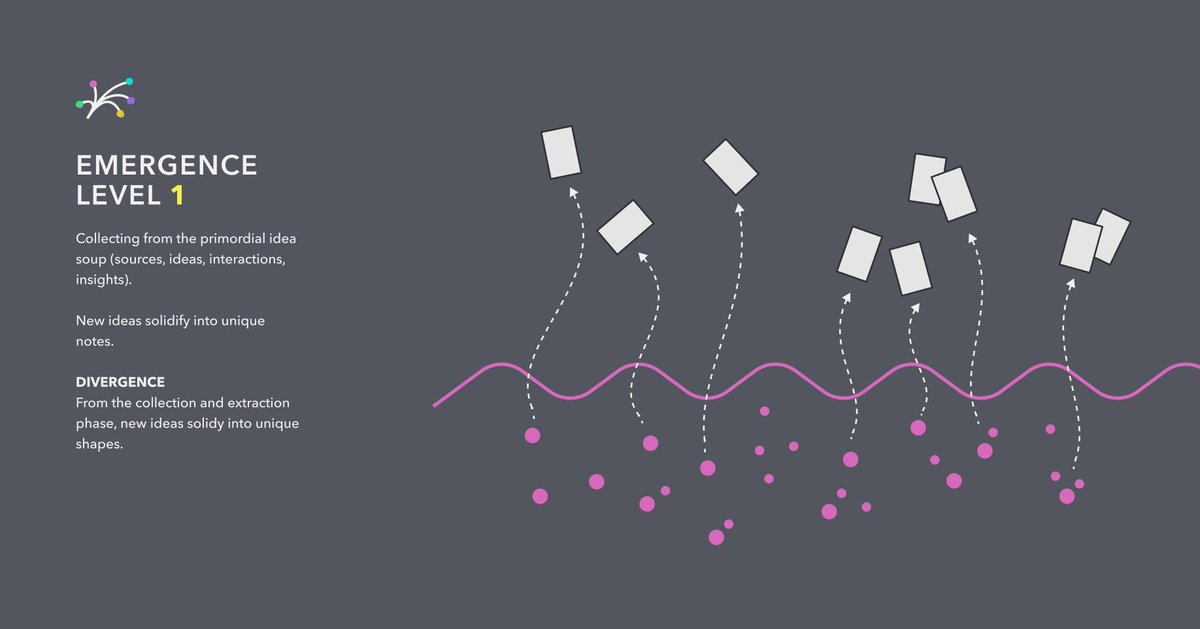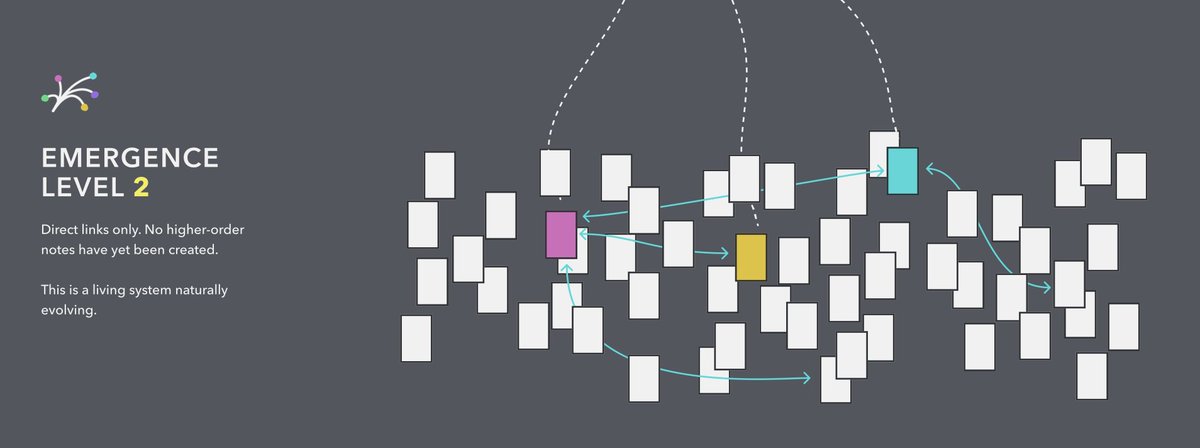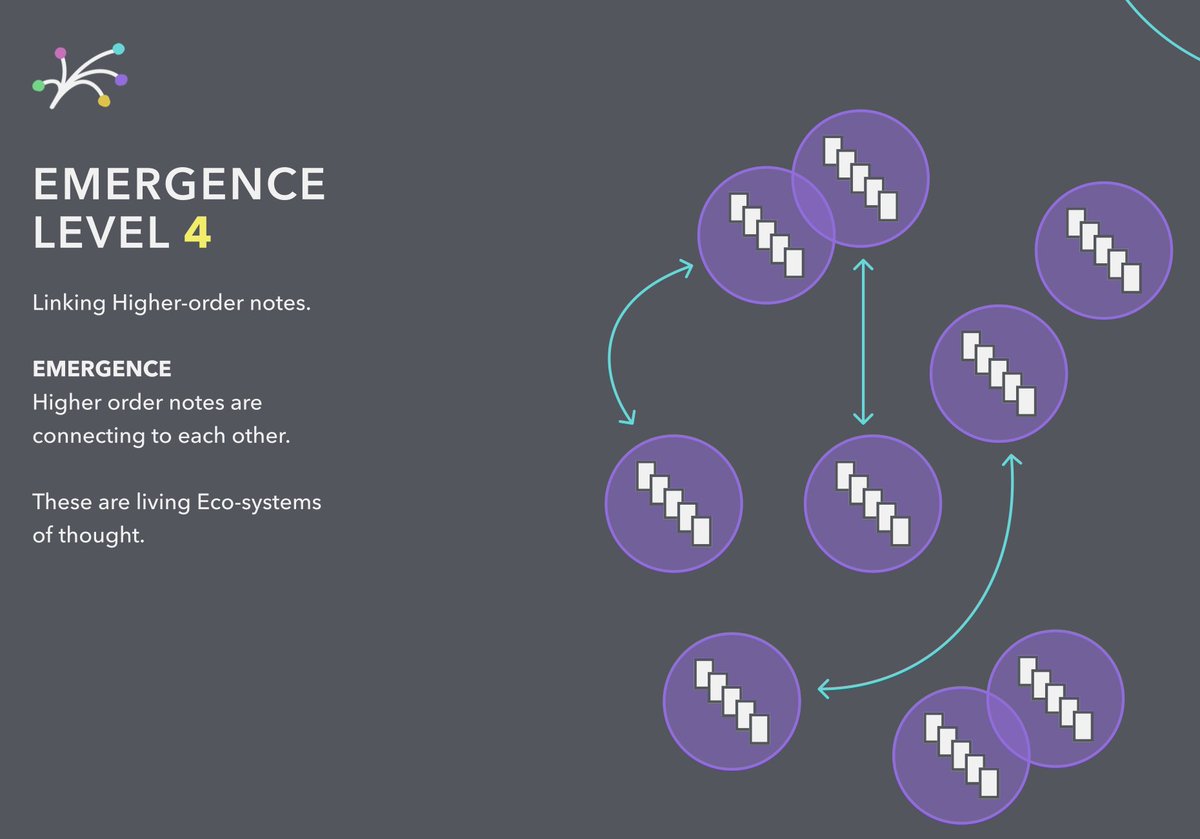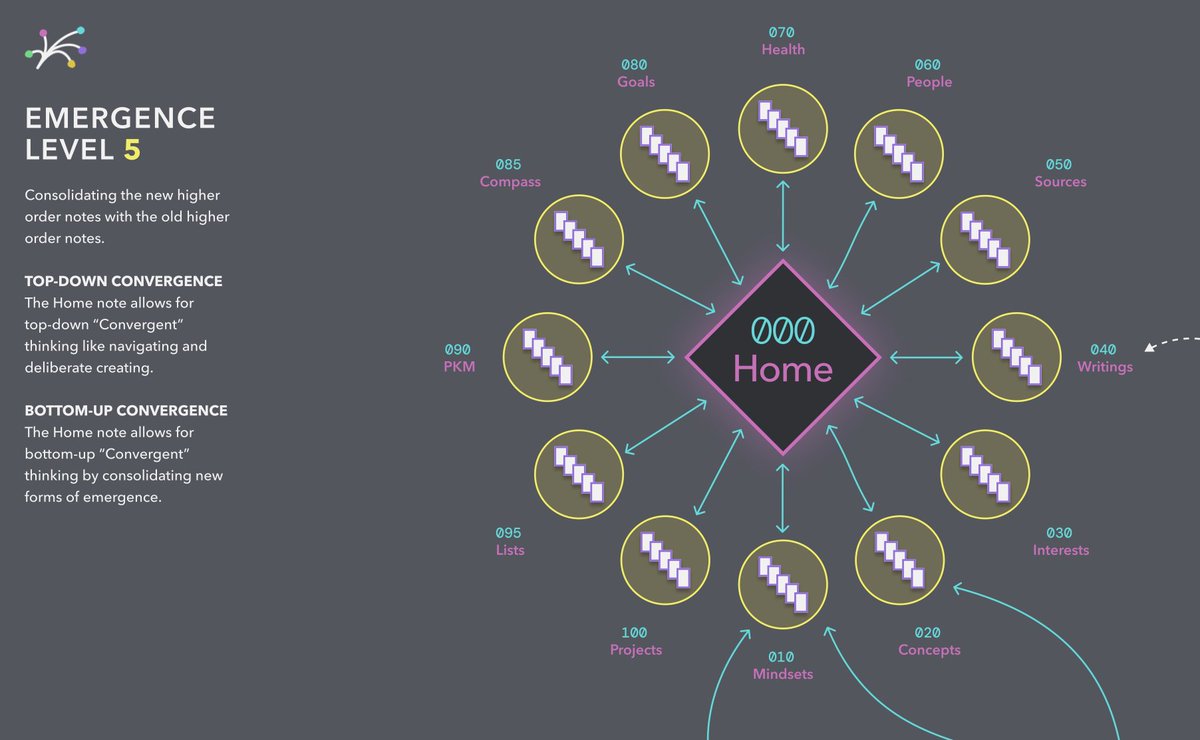# How I Organize Obsidian with Maps of Content (MOCs)
<iframe width="560" height="315" src="https://www.youtube.com/embed/gXvozu3I4K0" title="YouTube video player" frameborder="0" allow="accelerometer; autoplay; clipboard-write; encrypted-media; gyroscope; picture-in-picture" allowfullscreen></iframe>
Folders, tags, or links. Folders, tags, or links. Folders, tags, or links. Folders, tags, or links. Folders, tags, or links.
When you first start using Obsidian, organizing is easy. You just create some notes and let your future self deal with your problems. Just like in real life!
But if your migrating from another program, or your starting to get hundreds of notes in your vault, you simply will have to start organizing your vault in some way.
I have found for me the most effective, easy to understand, and interesting way to do this is through Maps of Content or MOCs. In this video, I will explain what a MOC is, the five levels of MOC Emergence, how you can create them top down or bottom up, and how you can assimilate them into a home note.
Before we start the video I want to preface that this is my own process for organizing things in my vault. Make sure this type of organization resonates with you before you do it. In addition , don't discount the power of folders and tags. I use both of them extensively in my system which I will make videos on at some point.
Finally, the original term MOC wasn't mine. It came from fantastic Obsidian community member Nick Milo who also has a YouTube channel I will link down below.
###### What is a MOC?
A map of content is a summation of a bunch of other related notes.
It's quite literally just a normal note in your Obsidian vault, that links out to a bunch of other notes. You can link out in paragraph form, as a bullet list, through numbers, whatever floats your boat.
They can serve as dashboards or overviews in your system and can also serve as hub spots for all of your research on a given topic.
Here are some example MOCs in my system:
- [[Happiness MOC]]
- [[PKM MOC]]
- [[📦Encounter Box]]
###### What are the benefit of MOCs?
- MOC organized systems reduce the need for folders and tags. Instead, you can use links as your primary organization feature.
- MOCs allow you to see the relationship between seemingly unrelated ideas. As notes connect you assemble them together. This only becomes more magical once MOCs start linking to other MOCs.
- MOCs allow you to think bottom up and top down. Adding a new note into your system you can connect it to a [[Concept notes|atomic note]] that is connected on the bottom of one of your MOCs or you can connect it on the MOC page itself.
- MOCs allow you to do the thinking and linking **first** and the organization later once the disorganization becomes overwhelming.
- MOCs often don't use weird tags and folder structures. They should be pretty easy to understand by any observer which might not be the case for other organizational methods.
So when do you create a MOC?
###### When do you create a MOC?
There are generally two starting points for MOC creation:
1. You already have the notes for your MOC and now your building it up. This could happen after you hit a mental squeeze point and notice a collection of ideas in your vault, or your migrating from another system into Obsidian and already have a ton of notes you want to create MOCs out of. This is totally fine, but I would highly encourage you to ask yourself if you really need to move your old notes into Obsidian or if it's your hoarder mindset making you want to do so. I came to Obsidian from Roam Research after a year and a half of use and didn't move any of my notes because I found it too hard to do the transferring. A massive weight was lifted off my shoulder when I just started from scratch.
2. The second starting point is you have no notes and your building the MOC over time. This is actually the best situation to be in because it gives you the time you really need to create good MOCs over time.
At this point your probably like, Aidong shut up and show us the MOC creation process already. Okay, okay, jeez. Don't expect me to say hi to you if we see each other in person.
I'm going to take you through the five levels of MOC emergence with my Happiness MOC as an example. The five levels of emergence where first put forth by Obsidian community member Nick Milo. I find them super useful for understanding the process.
The five step process is similar for both starting points of MOC creation except if you don't yet have the notes it will take place over a much longer period of time.
###### The Five Levels of MOC Emergence
**Emergence Level 1:**
All MOCs start out as singular notes. And singular notes come from the nothingness of fleeting thoughts.

In this stage, my happiness MOC wasn't even created yet. It was just a semblance of a couple of notes that resonated with me from conversations, books, and other information mediums:
- [[Your judgements of events hurt you, not the events themselves]]
- [[Desire is distortion]]
- [[Everlasting happiness comes from living a life in accordance with virtue]]
**Emergence Level 2:**
In this level notes start to link to other notes. Relationships are formed.

Pretty soon these seemingly unrelated notes started to get linked together. Those three notes from before, all created from information I had consumed on Stoicism and Buddhism related to Happiness got connected together.
- [[Your judgements of events hurt you, not the events themselves]]
- [[Desire is distortion]]
- [[Everlasting happiness comes from living a life in accordance with virtue]]
**Emergence Level 3:**
There comes a point in the process where you will want a birds eye view of the relationships between the notes you are connecting together. You hit your [[Mental squeeze point]].
This is when the MOC creation process begins.
There is a gathering, assembling, and incubating of information relevant to the MOC. Usually, this gathering will start out as a list of bi-directionally linked notes. Eventually you might turn this simple list into a paragraph structure.
This was my Happiness MOC during the beginning of Emergence level three, just a note with a whole bunch of different notes in it.
[[Cards/Happiness MOC]]
How did I find these notes? I simply collected some notes that were very clearly related to happiness and then checked where I had naturally connected and referenced them in the graph view and back links view.
Over time my [[Happiness MOC]] started to flesh itself out to what it is today.
**Emergence Level 4:**
At this level MOCs are linked to MOCs! This allows you to fly around your note library rapidly organically getting unforced behavior based [[Spaced repetition]].

You can see in my [[Happiness MOC]] how my MOC links to other MOCs.
**Emergence Level 5:**
The highest level of emergence comes when you create a Home Note with all of your highest order notes. The home note is your beginning and end, your launchpad and homebase.

Your home note allows for simultaneous top down thinking by looking at your system from the home note or bottom up thinking by creating atomic notes and adding them to MOCs linked to your home note.
This is my [[🏠 My Home]] note.
###### Creating the HOME Note
So how do you create this home note? It's largely similar to creating a MOC. Because your HOME note is a MOC, a MOC of your other MOCs. In fact, the bigger your system grows the more this will be the case.
You won't just have atomic notes and MOCs but rather atomic notes, lower level MOCs, middle MOCs, higher level MOCs, and then your HOME note. Or even more levels.
###### The Mindset Shift of Building MOCs and a Home Note
Something profound happen to me when I started building MOCs and Home notes. I started waking up every day with a wonder and curiosity for what new notes and connections I will make.
I'm building a unique interconnected body of knowledge, a culmination of my personal ideas and interpretations of my classes, own thoughts, conversations, and information consumption outside of school.
In effect, my knowledge compounds growing more and more useful the more notes I have rather than less.
I have reignited my joy for learning.
While I can't guarantee that this notemaking process will work for you, I strongly encourage you to try it out for a few weeks at least. Be sure to check out my video going over my in depth Zettelkasten notetaking process inside of Obsidian. It discusses not only MOCs but my philosophy behind how I take notes inside of Obsidian.